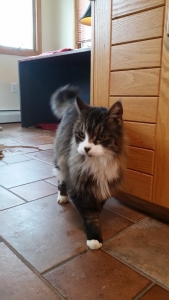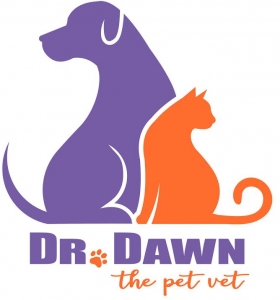

Indoor cats are protected against several risks to their safety, which are seen by cats that go or live outdoors. Cars, animal attacks, diseases, parasites, and exposure to poisons are some examples.
Yet, indoor only cats do miss out on some of the physical and mental activities that they love, and are programmed to engage in. Hunting and climbing, for example, prevent boredom, and allow exercise. It is becoming apparent that, without those opportunities, they are more prone to physical and behavioral problems, some of which can prove life threatening.
Cats that are free fed, or self fed, tend to over eat and easily can become obese. Thus, they become prone to diabetes and other health issues caused by obesity. The heavier they are, the less they exercise. They also become bored when they are not active and busy, which has been shown to lead to stress related behavioral problems, such as spraying, aggression, and destruction of furniture. Inappropriate urination is a leading cause of rehoming, or often, euthanasias. Stress is a culprit in many skin problems, and excessive licking or overgrowing.
We have a name for these physical and behavioral manifestations of boredom and increased stress: Pandora Syndrome. What is clear is that, if we can enrich our indoor environment to encourage activity, both physically and mentally engaging kitties, we can hope to reverse it.
As a house call veterinarian, I am constantly assessing cats in their home environment. I actively help them implement small changes that can make huge differences. Some of the main suggestions I regularly dispense are:
- Move food bowls away from the wall. Cats like to face out, scanning the room, while eating.
- Feed each cat separately. Most kitties prefer to eat alone. Feeding multiple cats in the same location can be stressful and result in aggression between the cats. If you have this issue in your home, try this for a week and see if you notice a difference.

3. Provide several scratching posts, climbers, carpet covered cat trees or perches, particularly near windows. Cats like to be high and survey the yard, or the home. They are predators.
4. Cats are also prey. They need access to safe spaces where they can hide. They like to snuggle in cardboard boxes, or an opportunity to hide under a bed, when there is too much activity, noise, or strangers come to visit.
5. Cats tend to prefer their own litter boxes. For similar reasons to the separate feeding areas, they do not have to encounter another cat or his scent markings in the litter box area. In fact, it can be off putting to them if you switch litter types. Avoid scented litters or very strong cleaning solutions, as their much stronger sense of smell can make them much more sensitive to the odors than you or me.
6. Play with your cats, and engage them in games with lights or toys to chase. This will foster wellness, and the extra playtime will strengthen the bond between you both.
7. Take advantage of that incredible sense of smell of theirs, which they use to explore, and mark their territory, or say… their scratching post.
Feliway is a plug in pheromone that I recommend in households with cats exhibiting signs of stress. It helps relax them. It is available online.

8. Offer opportunities to hunt. A great product I also recommend is the No Bowl feeder. It comes with 5 plastic “mice” that function as food puzzles. But, the key is that you measure out a day’s total calories, divided into several mice, and hide them around the home. Thus, it prevents overeating while satisfying their need to hunt, and then play with their “kill”, and finally eat their “prey”. Vary the hiding places regularly. It is available at Docandphoebe.comor on Amazon.

In fact, the instinctual drive to hunt is said to consume 80% of their waking hours in the wild. They are solitary hunters generally. So this is something they can do in both single or multiple pet homes. It reduces boredom in a different way than play does. Sometimes play will over stimulate them, and some cats can get play aggressive. With this ability to hunt, they are satisfied by the catch and play. The puzzle feeding ultimately allows them to experience the psychological reward of the hunt. It is referred to as the “Seeking Circuit”.
9. The amount of daily calories is usually overestimated. I sit down with the pet parent to write down the calories per cup or can of their diet, and try to first figure out how many calories are being eaten daily. It often surprises people to know that roughly 350 calories a day is recommended for an average sized cat to maintain their weight. For weight loss, I tend to recommend 250-275 calories a day.
That’s not a lot of food.
Also, access to too much food at once can lead to overeating in one sitting, and regurgitating or vomiting the excess. The “hairball” vomiting that he has always done takes on new meaning when you think about the fact that his stomach is not big. In the wild, the delay in acquiring food by hunting slows the eating process and allows them realize satiation and , thus, prevent barfing.
So, once you cut down the amount, also think about that, naturally, cats are crepuscular hunters. That means that they hunt and eat at dawn and dusk. This way, that dawn feeding can be satisfied by hunting down what you hid the night before, and not being woken up by a hungry kitty at sunrise.
Dr. Dawn
Please share and subscribe via this link here.



